Story by Aldo Zana
Herein, Aldo Zana describes the functions of the AISA, (the Italian Association for the History of the Automobile), and discusses the recent conference on Jim Clark. Please consider joining the AISA, open to all serious automobile and motorcyle enthusiasts.
AISA General Description
The AISA (Associazione Italiana per la Storia dell’Automobile – Italian Association for the History of the Automobile) was established 1987 in Milan by a group of prominent Italian enthusiasts and experts of the motoring world, including executives, designers, engineers, university professors, historians and journalists.
The basic concept of the association was outlined by Angelo Tito Anselmi, a major Italian motor writer and scholar, who was one of the founders of the historic car culture and interest in Italy. Among many achievements, he helped bring to life the post-war relaunch of the Villa d’Este Concours d’Elegance.
The first AISA president was Dante Giacosa, the famous technical head of Fiat car projects and production. The logo was designed by Giorgetto Giugiaro, and the legal address was the Turin National Car Museum, today known as Mauto.

When you become an AISA member, the membership includes one of the two books published by the Association, such as this one, entitled Tomorrow is an Option.
Membership was later widened to scholars, car buffs, collectors, enthusiasts and fans of motor technology, racing and culture. Members are individuals, companies and institutions sharing an interest in motoring, either as a personal passion or for professional reasons.
In 2019 there were 263 members, not bad for a cultural association in a small country speaking a language quite unknown beyond the borders. The current president is ingegnere Lorenzo Boscarelli assisted by a Board of six directors.
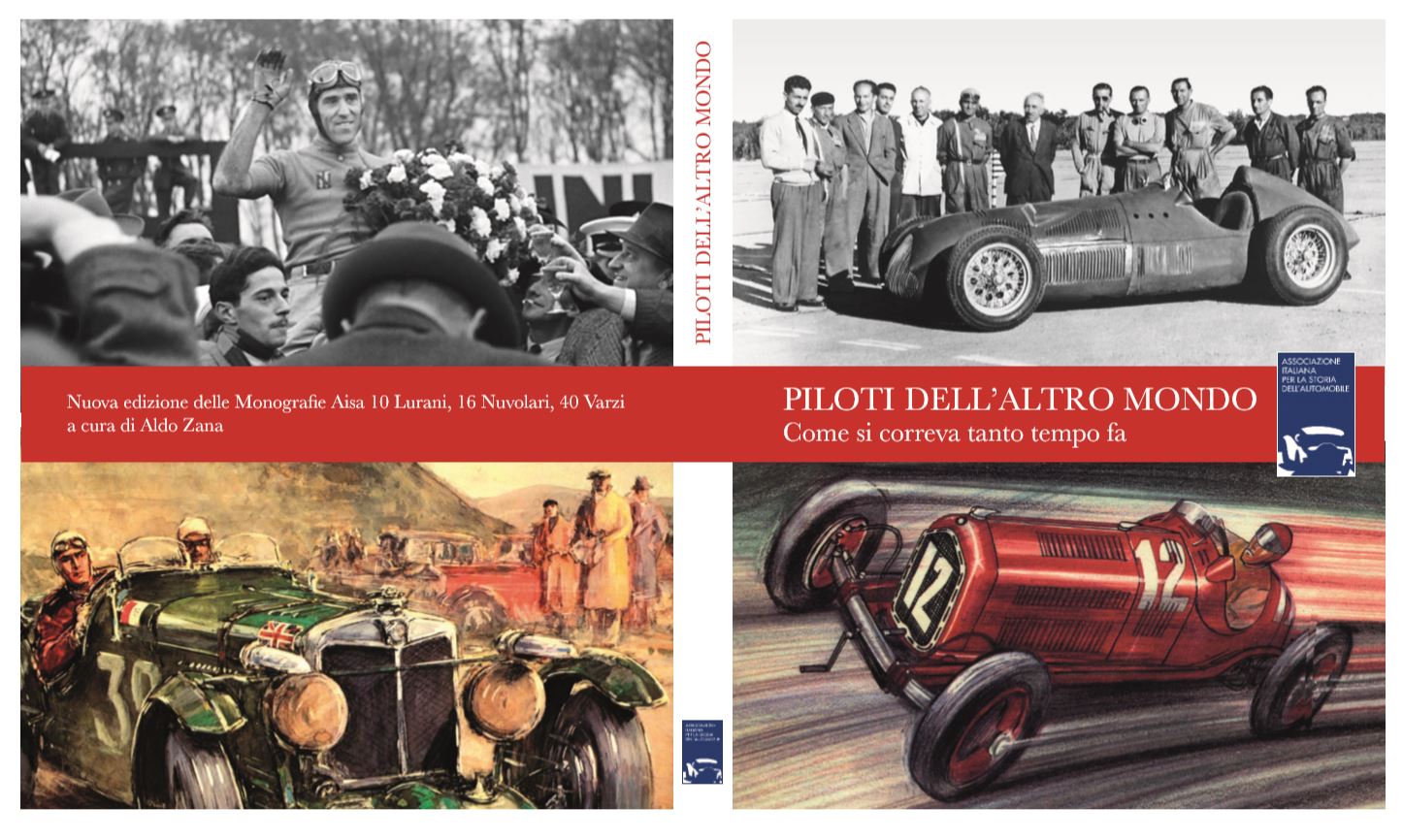
The other choice of books is this bio of Nuvolari, Varzi, Lurani and Ascari The books are about 11”x10” hardbound, color and B&W, 200 pages each.
Its objectives are the preservation of the wealth of personal and corporate experiences and documents rich in historical value, and it has promoted and published research and documents about culture, development, and the history of the automobile, the motorbike and other means of transportation. The AISA organizes conferences, roundtables, and symposiums focusing on the important individuals and key moments of the automobile and motorbike world. The proceedings are scholarly edited and published as illustrated booklets in the Italian language, called the Monografie, or Monographs, and are distributed free to the members. To this date there have been 121 such monographs which create a collection of unique historical documentations.
The form to join AISA is in the association’s website: www.aisastoryauto.it
The website includes the full-text published monographs, the unique photo archive of the late AISA member Andrea Curami, a news page, a review of the books authored by members, and a page of yet unpublished articles and researches by the members.
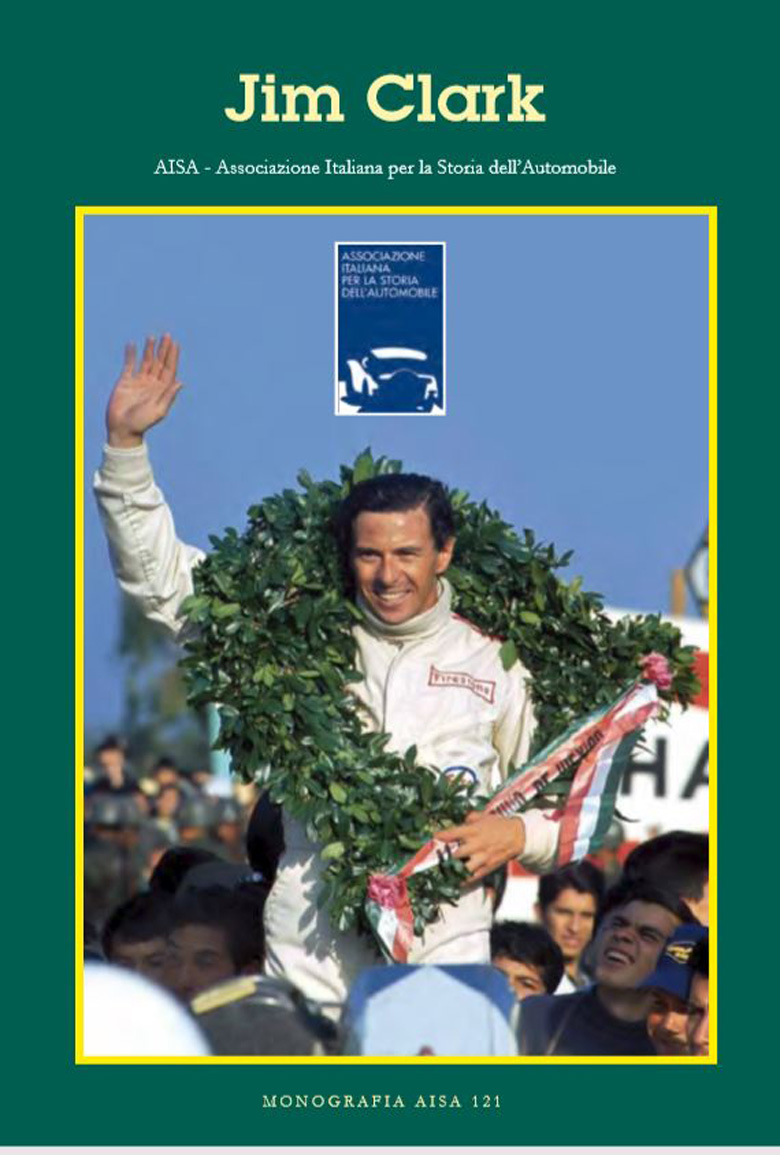
If you join the AISA now, you will also receive the Jim Clark Monograph. 115 photos and drawings complete the booklet, ready by March 23 to be distributed to the members.
AISA Conferences and Monographs
Here is a random sample of speakers in the 121 AISA conferences and roundtable since 1998: Dante Giacosa, Giulio Alfieri, Rudolf Hruska, Sandro Colombo (technical director and chief designer of the Gilera racing motorbikes and 1972-1973 Ferrari technical director) Giorgetto Giugiaro, Francesco de Virgilio, Giuseppe Busso, Adolfo Orsi, Mauro Forghieri, Elio Zagato, Pierugo Gobbato, Alfieri Maserati, Giampaolo Dallara, Lilli Bertone, Sergio Pininfarina, Lorenzo Ramaciotti, Mike Robinson, Andrea Curami, Ercole Spada, Leonardo Fioravanti, Valerio Stradi (longtime Enzo Ferrari personal assistant), Guido Rosani, Ercole Colombo (photographer), Tom Tjarda, Filippo Sapino, Giotto Bizzarrini, Dino Brunori, Enrique Scalabroni, Siegfried Stohr, Bruno Giacomelli, Maria Teresa de Filippis, Gino Valenzano, Gino Munaron, Giulio Borsari, Pasquale Cassani, Ener Vecchi, Tonino Ascari, Romolo Tavoni, Alberta Savonuzzi.
Before the Jim Clark event, other conferences and Monographs dealt with non-Italian drivers: Bernd Rosemeyer (by Aldo Zana), Jean-Pierre Wimille (by Alessandro Silva), Gilles Villeneuve (by Mauro Forghieri).
AISA conferences and Monographs also dealt with motorbikes, art and culture, company history, Italian motoring industry’s top managers (Vittorio Valletta, Giuseppe Luraghi, Ugo Gobbato, Vittorio Ghidella) as well as with individual cars such as the Fiat 500, Maserati Birdcage, Mercedes-Benz 300 SL, Peking-Paris Itala, Lancia Stratos, Lancia Aurelia, Alfa Romeo 1900, Alfa Romeo 158/159, and the Fiat 1400 saloon. Conferences were also focused on top Italian “carrozzieri” including Pininfarina, Bertone, and Touring.
The Turin Conference on Jim Clark
Thanks to Mrs. Mariella Mengozzi, Mauto director, the Turin venue hosted a conference on Jim Clark on February 16, 2019. The event opened the new year of the Association. The audience numbered about 80, including non-members, quite a sizeable audience for a niche subject on a Saturday morning.
Donatella Biffignandi, AISA director living in Turin, and retired head of the Museum’s Documentation Centre, managed the organization of the event. Alessandro Sannia, publisher of many books on Italian cars and an AISA member, edited and published the Monograph.
The Monograph on Jim Clark
The Monograph on Jim Clark (number 121 in the series of Monographs) presents the speeches delivered by Graham Gauld and Gianni Cancellieri. They both knew Jim Clark in person; Graham as his official biographer and a lifelong friend, Gianni reporting on Jim Clark’s career. He followed him as the editor of the Italian motor weekly Autosprint and had the opportunity to have an interview with Jim Clark in the paddock of the F1 non-championsip race at the Imola circuit on April 21, 1963. The interview wasn’t published in the magazine and it appears in print for the first time in the Monograph.
In addition, the 80-page booklet (size 8.26” x 11.65”, i.e. European A4) is complemented by a 1965 article by Jim Clark himself about his early career, some pages excerpted from Jackie Stewart’s autobiography, and a personal remembrance of the fateful April 7, 1968 by Enrico Minazzi, retired motor editor of “Gazzetta dello Sport”, (a leading Italian sports daily). Finally a story by Aldo Zana about the 1967 Italian Grand Prix, where he witnessed Jim Clark’s chase to regain the lead after having lost a lap in a pitstop early in the race.
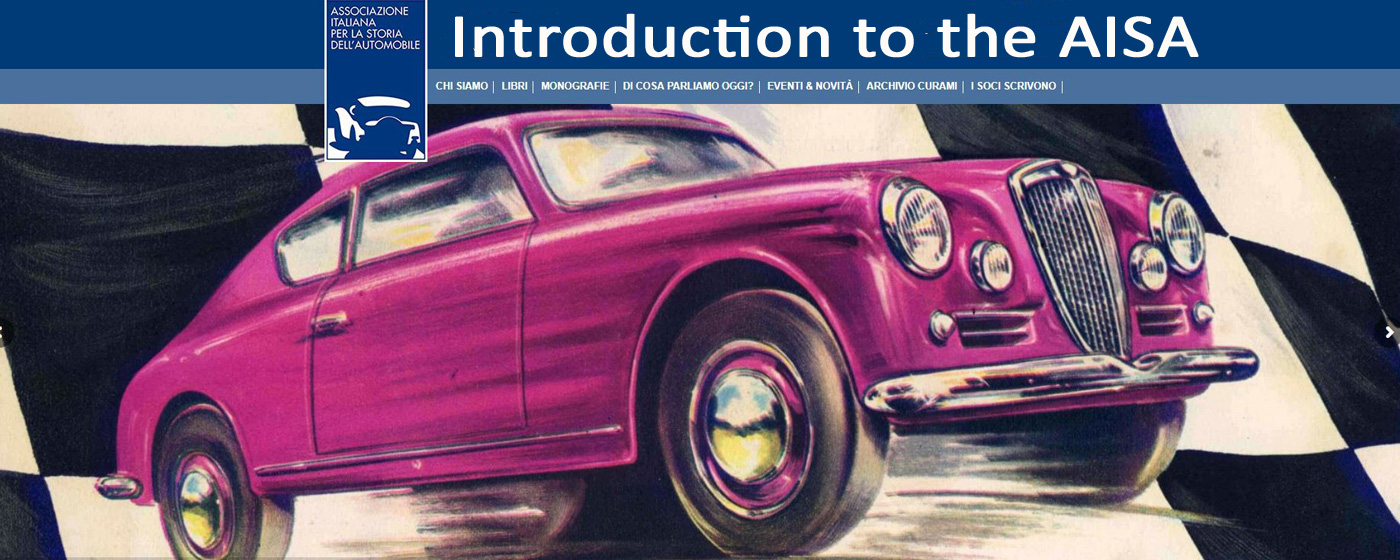
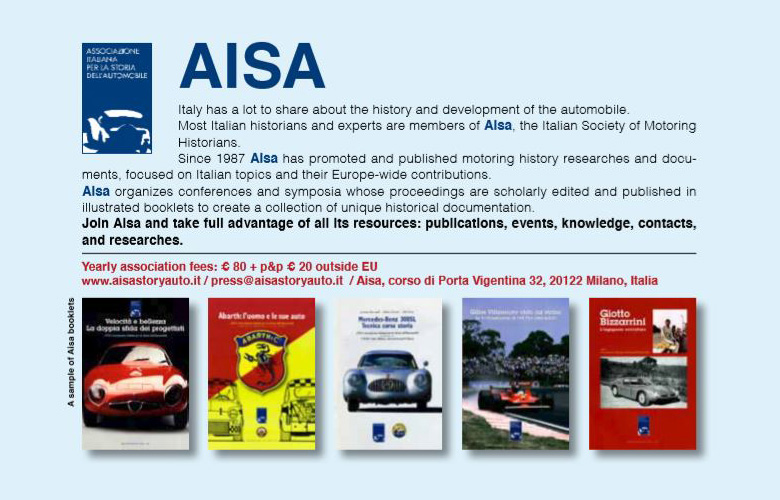
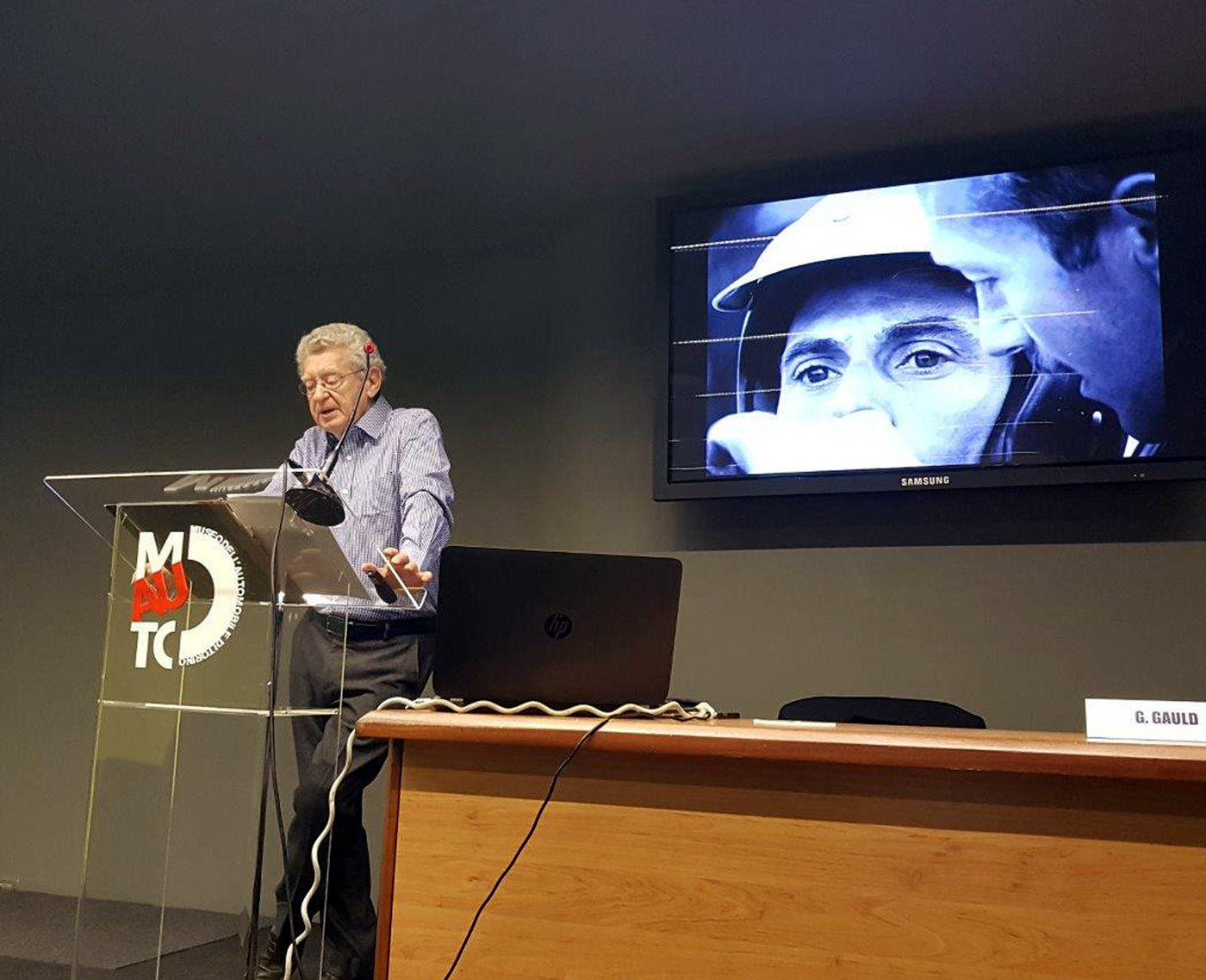
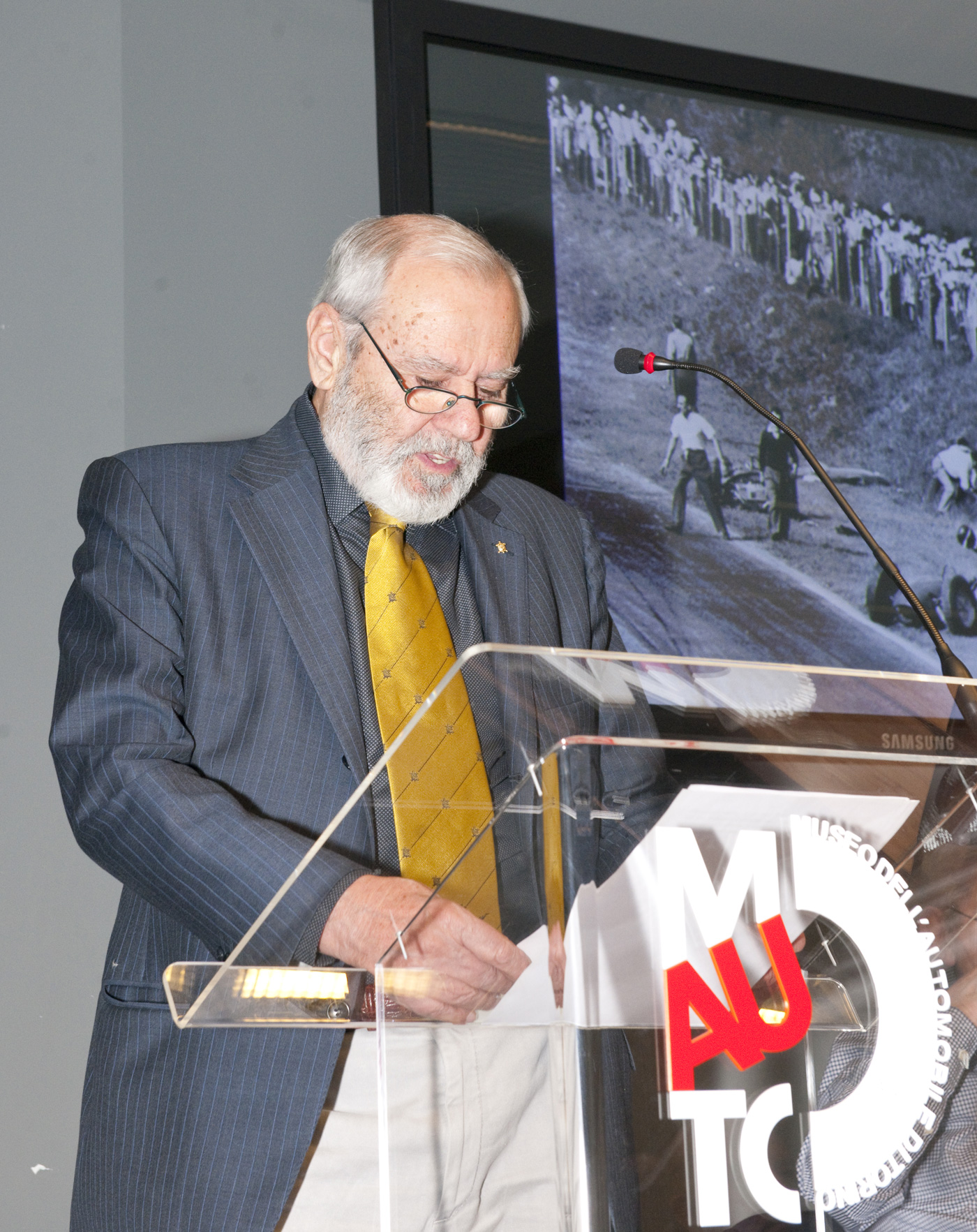
AISA looks like a fantastic organization and I hate to be that guy but being unable to read Italian I don’t think it would make sense for me. Very disappointing but thanks for alerting me about it.